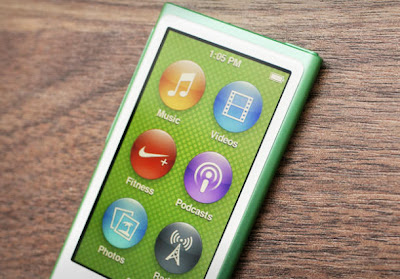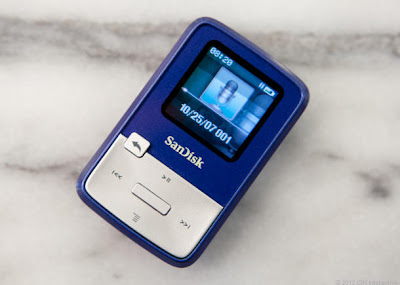Showing posts with label How to Buy an MP3 Player. Show all posts
How to Buy an MP3 Player
How to Buy an MP3 Player

Whether you want to get your groove on while working out or would like to amuse yourself as you commute on public transit, a portable MP3 music player could suit your needs. MP3 players--available in a wide variety of styles and sizes and capable of storing thousands of songs--capitalize on digital technology to supplant traditional Walkman-style cassette-tape players and portable CD players.
The Big Picture Today's players pack loads of songs, and the devices are easy to manage, too. We'll help you figure out which one is best for you.more
The Specs Explained The storage capacity and battery life of an MP3 player can have a big impact on how much you enjoy it. We'll explain what's behind these and other specifications.more
MP3 Player Shopping Tips Our advice will help you find the right MP3 player for your lifestyle without paying too much.more
The Big Picture
A portable digital audio player sets your music free so you can easily mix and match songs in any order and take the tunes with you. MP3 players use one of two storage mediums: hard drive or flash memory. Hard-drive players offer the greatest amount of storage space but tend to be larger and more susceptible to damage due to the fragile nature of hard disks. For the most part, flash-memory models hold a more limited number of songs, but their lack of moving parts makes them more durable than hard-drive players.
Nearly all MP3 players require that you have a reasonably modern PC with a free USB 1.1 or 2.0 port. Your songs will load much more quickly with the latter. As you begin creating your music collection on the computer, you may want to upgrade your hard drive to be able to store more files.
Specialized MP3 players are not the only devices you can buy to listen to your music: You can now get mobile telephones, thumb drives, digital cameras, personal digital assistants, and car stereos that can store and play back MP3 music files. Even many pocket-size voice memo recorders can also record and play back MP3 files. But a word to the wise: Dedicated MP3 players usually sound better and often have more user-friendly controls than hybrid units, although devices like the Apple iPhone are beginning to wear this assumption down.
Storage: The greater the storage capacity, the more songs you can take with you. Hard-drive-based players hold the most--currently, the highest capacity we've tested is 80GB (which can accommodate about 20,000 MP3 songs ripped at 128 kilobits per second). The latest (and most expensive) flash-based players we've tested can hold up to 8GB of music (about 2000 MP3 songs ripped at 128 kbps).
File management: MP3 files include ID3 tags, metadata embedded within each song file that provides artist name, song title, and album name information to the player. Working with this data, a player can organize the files for you, though each does so in its own way. Most players have a built-in LCD screen; look for one that shows the information you use most.
Transfer speed/port type: Downloading 5GB of songs all at once from your PC using a USB 1.1 interface can take all night. Almost all new players employ the much faster USB 2.0; but if speed is important, ensure that your player of choice supports the faster standard before you buy.
Sunday, May 19, 2013
Posted by surfboard extreme
Tag :
articles,
best mp3player,
How to Buy an MP3 Player,
mp3,
mp3 player,
mp3player,
music,
mv,
song,
video
How to Buy an MP3 Player
How to Buy an MP3 Player

Even though many of us have ditched our MP3 players in favor of cell phones or tablets that can play our digital music, the dedicated portable media player (PMP) market does still exist. It might not feel like it, though, since Apple's iPod line has evolved dramatically in the ten-plus years since its inception, and enjoys the lion's share of that ever-shrinking market. But an iPod isn't an automatic choice for everyone, and there are still some worthy competitors to consider. Whether you live in the iTunes ecosystem or not, considering the following points will choose your ideal PMP.
Capacity: Flash Memory or Hard Drive?
While there are very few models available these days, hard-disk-based players offer the highest storage capacities. They're ideal if you want to carry all of your media in your pocket, or if you want your player to double as an external hard drive. They're also great for audiophiles that prefer to listen to Apple Lossless or uncompressed WAV files, which duplicate exactly what you'd hear on an audio CD.
Most people don't need that much storage, however, and hard-disk players have a serious disadvantage: They're far more fragile than their flash-memory-based counterparts. While Apple still currently offers the iPod line in hard-disk and flash-memory flavors, most other companies have phased out hard-disk devices altogether, though you might still find an older Archos or Creative player from a third-party online retailer or on eBay for a great price. The largest, major-brand flash players available currently top out at 64GB of on-board storage, and have been stuck there for a couple of years, but if they advance to 128GB, it will likely kill the hard-drive player altogether. Luckily, many (non-Apple) players integrate an SD card slot to expand your storage space. Overall, if you're looking for maximum capacity right now, your best (and possibly only) bet is the hard-drive-based 160GB Apple iPod classic .
It's not all about how much music or video you can tote, it's about toting the actual device itself. What are you going to use it for? If you want to work out with your player, it's best to look for a smaller model that you can strap to your arm or clip to your shirt. Also, you probably want a more durable player to exercise with. The tiny Motorola MotoActv , is more fitness gadget than MP3 player, but it does integrate 8GB or 16GB of storage for your music, making it worth considering for the gym. The delicate, largely glass iPod touch, on the other hand, might not survive a drop on the pavement during your morning run.
Controls are important, too: Do you want to put some music on your device and just listen? The tiny iPod shuffle will do the trick, offering minimal physical controls and no screen. Or do you want to be able to see what's playing and visually move around the user interface? Then you need a player with a display.
Screen Size and Resolution
If you want to see your album art, plan on watching movies or TV shows, or viewing your photos, you should look for a PMP with a large, high-resolution screen. Right now, you can't beat the ultra-sharp 4-inch 1,136-by-640-pixel Retina display on the latest iPod touch, but it's not the only game in town. While not as tightly packed with pixels, the Android-based Samsung Galaxy Player 4.2 and Sony Walkman Mobile Entertainment Player each have a 4-inch 800-by-480 touch screen. (There's a 5-inch version of the Galaxy player too, though its display is just larger, while the resolution stays the same.) And the latest version of the iPod nano once again supports video playback, and comes with a bright, albeit smallish, 432-by-240-pixel 2.5-inch screen.
File Support
If you own a lot of protected content—be it audio or video—you'll want to make sure the file types you have will work with the player you choose. If you opt for an iPod, you don't have a lot of choice, but there are also file formats common to, ahem, some "sharing" sites that won't play on every device—such as Xvid for video, or the audiophile favorite, FLAC. If you're counting on loading a device up with FLAC files, you'll want to make sure your device actually supports it first. (iPods don't support FLAC, so you'll need to either go a with a different player—like the Samsung Galaxy Player—or first convert your files with a program like XLD.)
Special Features
These days, to keep competitive with phones and tablets, pretty much all MP3 players do more than simply play music. The Sony W Series Walkman , for example, builds the player into a pair of high-quality, gym-friendly earphones. The SanDisk Sansa Clip Zip integrates the subscription-based Rhapsody music service. On the higher end, the iPod touch and aforementioned Android players from Samsung and Sony offer up access to hundred of thousands of third-party apps and games, so they're just like smartphones without pesky monthly contracts. Just keep in mind that more features tends to mean a higher price tag, which leads us to...
...The Most Important Part: Price
One feature everyone wants? Affordability—especially if you're also paying for a cell phone and/or tablet. While some players will cost you an arm and a leg (the new iPod touch now starts at $299!), inexpensive options abound, like the no-frills $90 Sony Walkman NWZ-E474. And if you do some smart online shopping, you can score a real bargain—even on a discontinued, but perfectly useable, player.
Monday, April 1, 2013
Posted by surfboard extreme